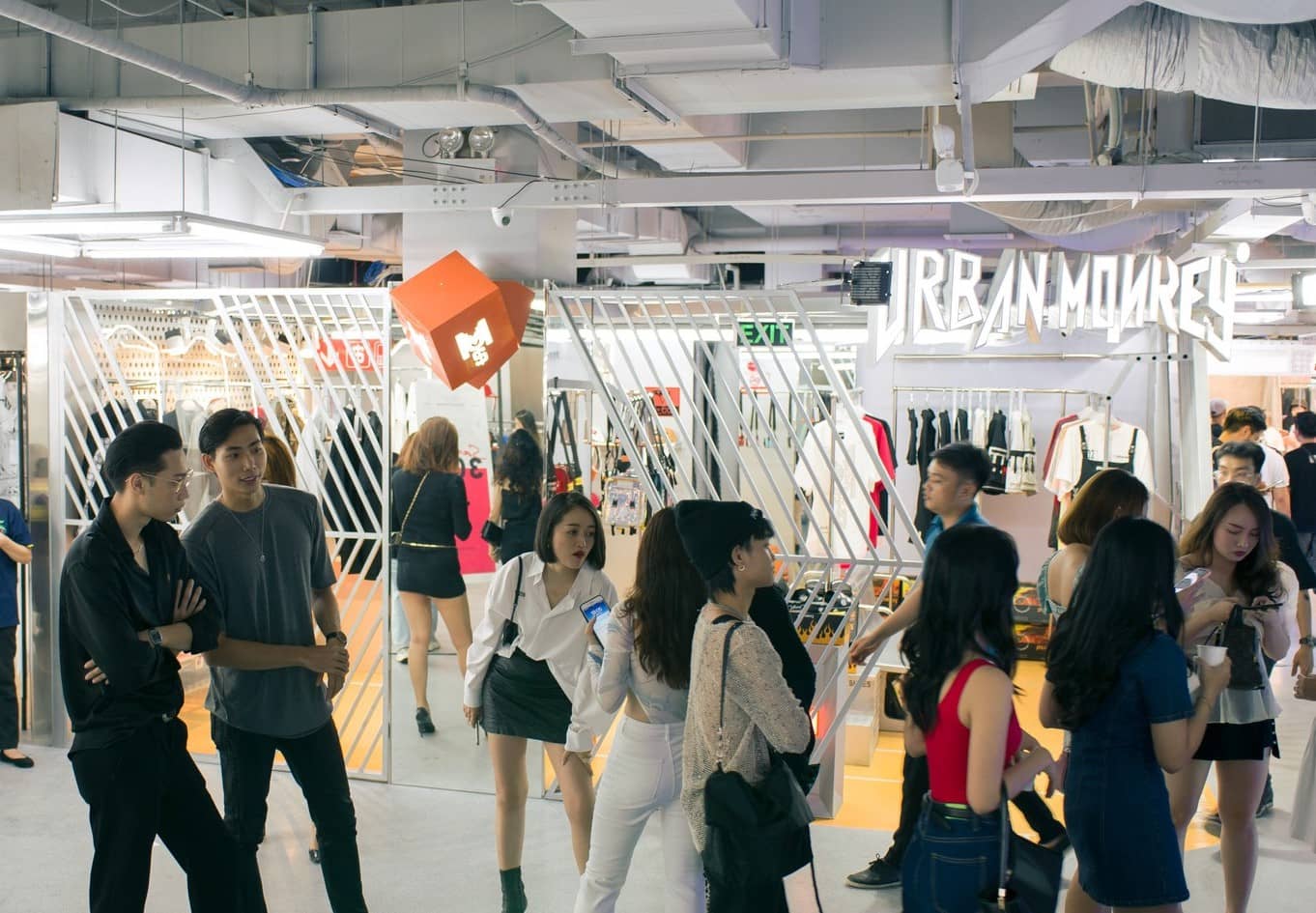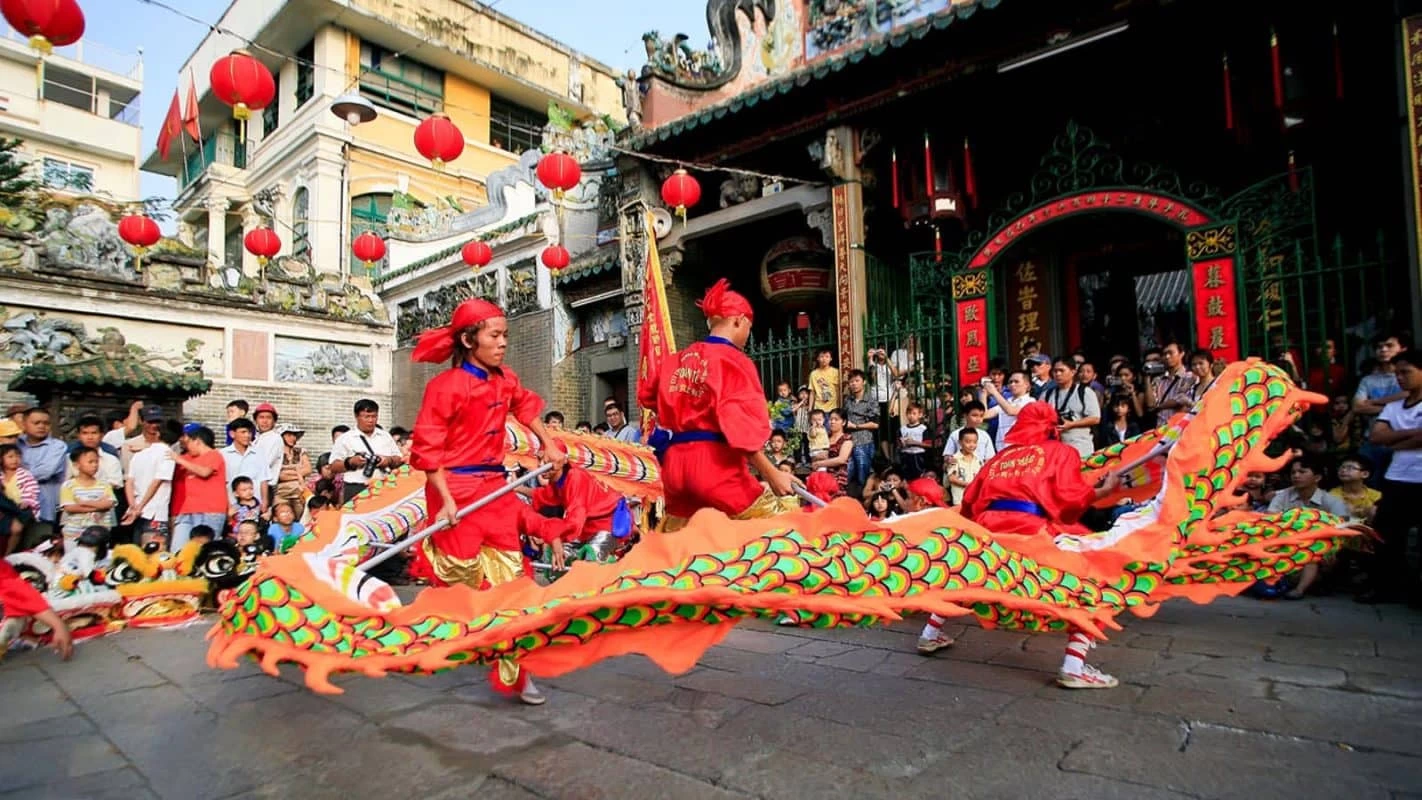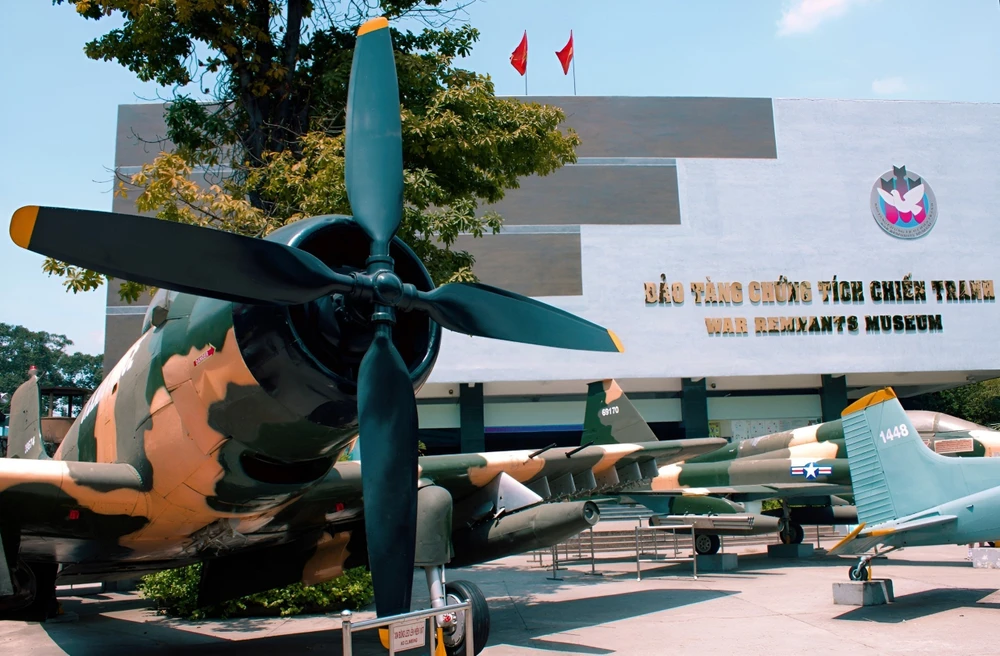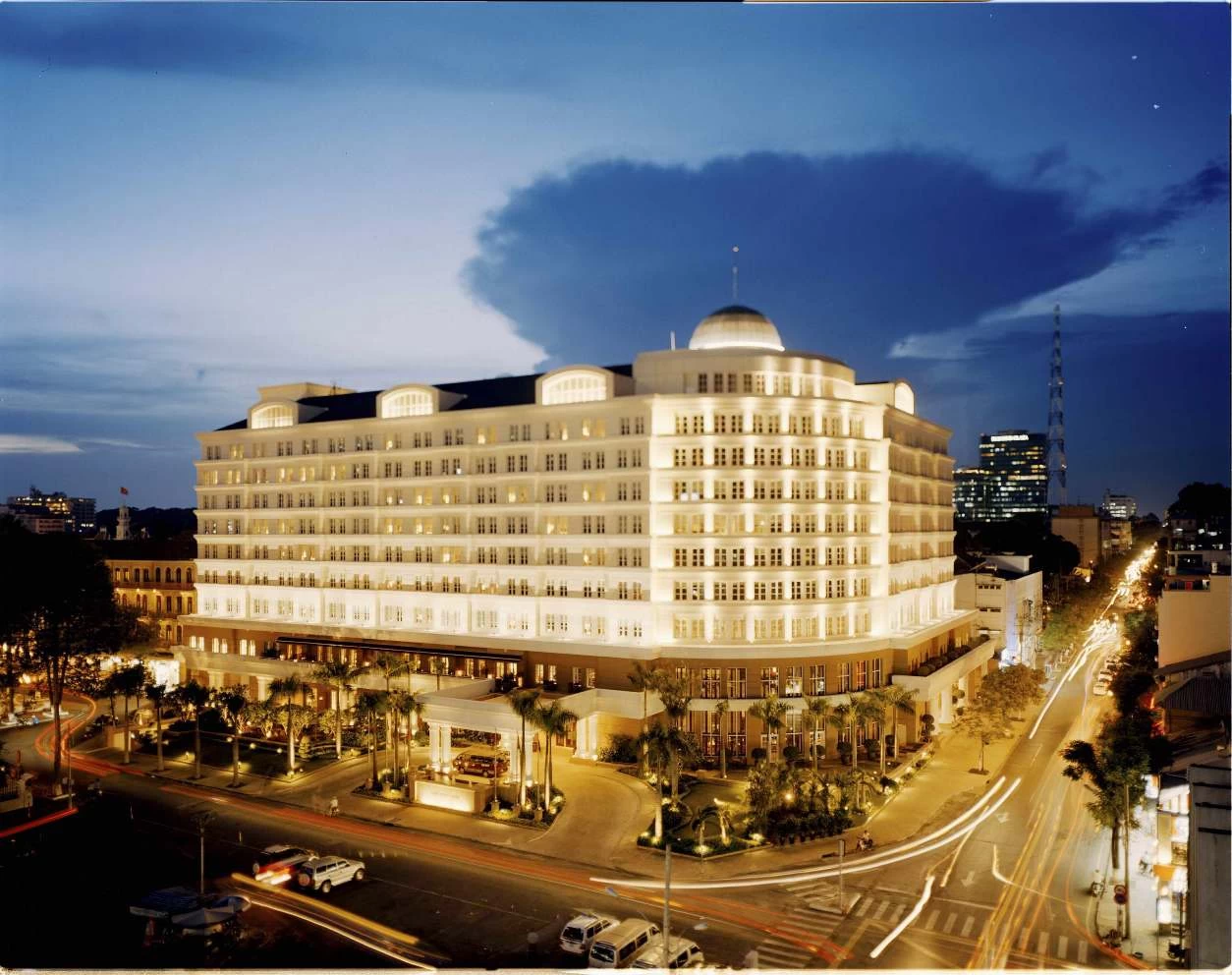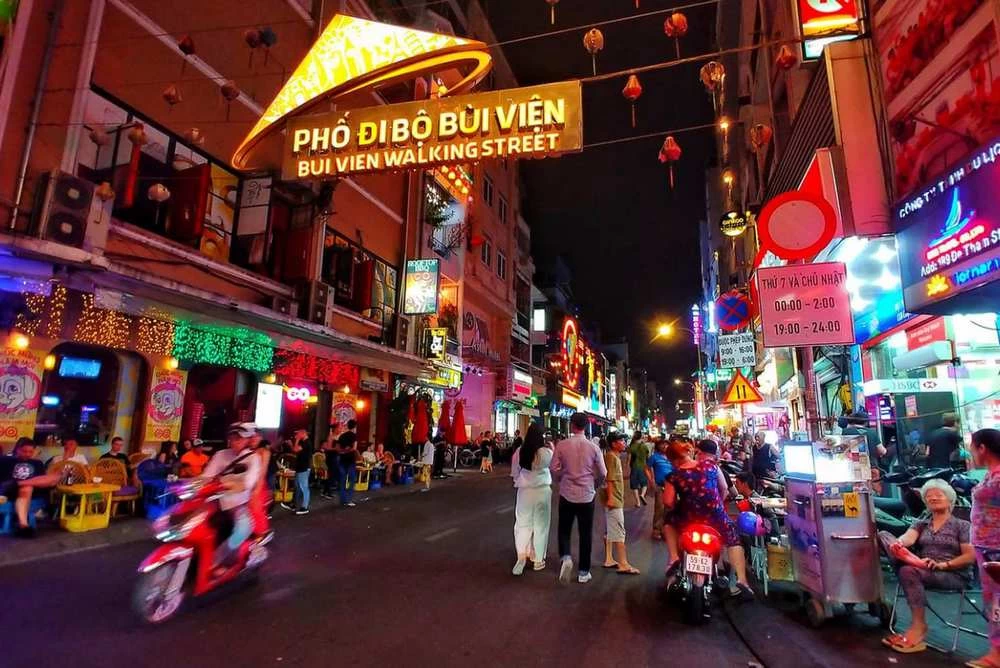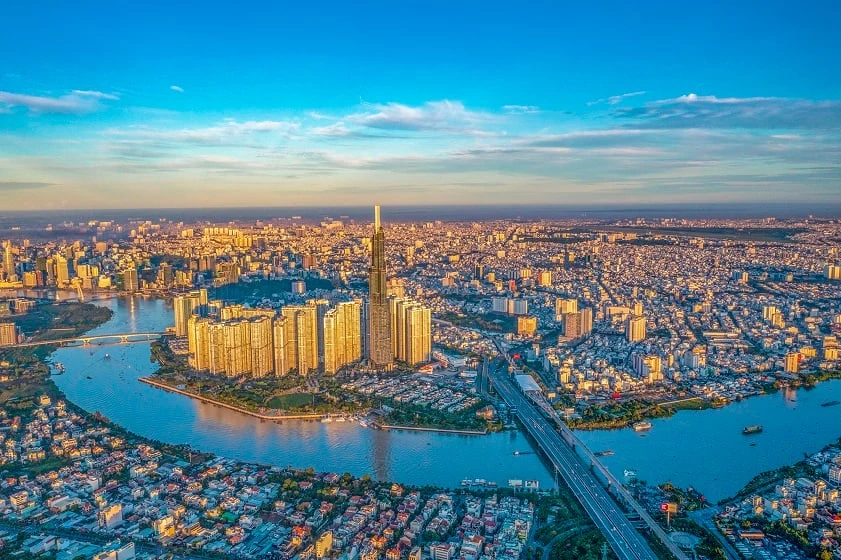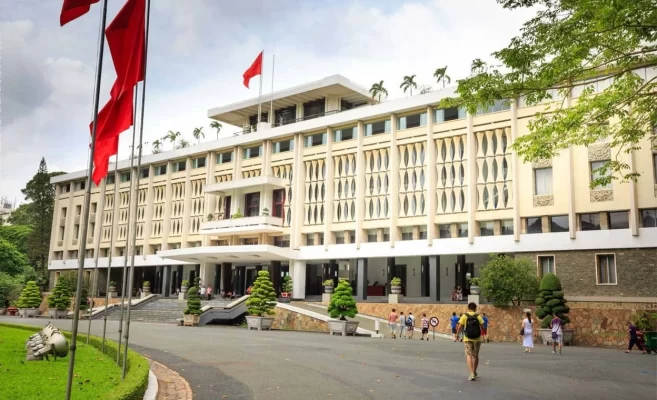
Let’s explore Reunification Palace to see what’s interesting!
Explore the historic Reunification Palace in Ho Chi Minh City, a symbol of Vietnam’s reunification and a must-visit landmark for international travelers. Discover its stunning architecture, significant role during the Vietnam War, and fascinating exhibits that bring the country’s rich history to life. With guided tours available in multiple languages, immerse yourself in the captivating stories of this iconic site. Enjoy the beautiful gardens and unique interior rooms, making your visit an unforgettable experience in Vietnam’s vibrant capital. Plan your trip with Ula Travel today!
I. Introduction to the Reunification Palace
1. Overview of the Reunification Palace
The Reunification Palace, also known as Independence Palace, is one of the most iconic landmarks in Ho Chi Minh City, Vietnam. Located at 135 Nam Ky Khoi Nghia Street in District 1, this historic building symbolizes Vietnam’s journey to independence and unification. Originally built as a residence for the French Governor-General of Indochina in 1868, it later became the Presidential Palace for the President of the Republic of Vietnam during the Vietnam War.
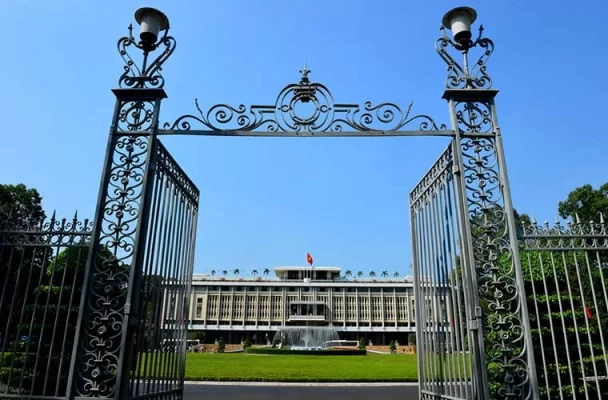
Reunification Palace is a very important historical site.
The palace holds immense historical significance as the site where the Vietnam War effectively ended on April 30, 1975, when a North Vietnamese tank crashed through its gates, marking the fall of Saigon and the country’s reunification. Today, the Reunification Palace serves as both a national museum and a cultural landmark, offering visitors an insightful look into Vietnam’s turbulent history and its journey toward peace.
2. Why Visit the Reunification Palace?
Visiting the Reunification Palace provides a unique window into Vietnam’s rich history and cultural resilience, making it an essential stop for international travelers exploring Ho Chi Minh City.
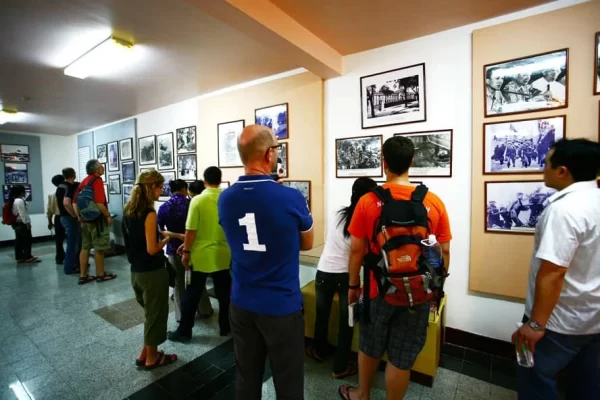
It is the great historical value that attracts tourists to this tourist destination.
Unlike typical historical museums, this palace immerses visitors in the 1970s atmosphere, with many rooms preserved in their original form, allowing guests to see how government officials worked and lived during a transformative time for the country. Here, visitors can explore the bunker-filled basement, which served as a wartime command center, and observe relics such as old military telecommunication devices and maps that bring Vietnam’s history vividly to life.
The palace’s striking modernist architecture, designed by renowned architect Ngo Viet Thu, offers a blend of traditional Eastern and contemporary Western design, making it not only historically significant but also architecturally fascinating. The Reunification Palace stands out not just as a symbol of peace but as a cultural bridge that helps international visitors gain a deeper understanding of Vietnam’s complex past and enduring spirit.
Click here: Ho Chi Minh City Tour
II. History of the Reunification Palace
1. Former Presidential Residence
The Reunification Palace, originally known as the Independence Palace, played a central role during the Vietnam War as the residence and office of the President of the Republic of Vietnam (South Vietnam).
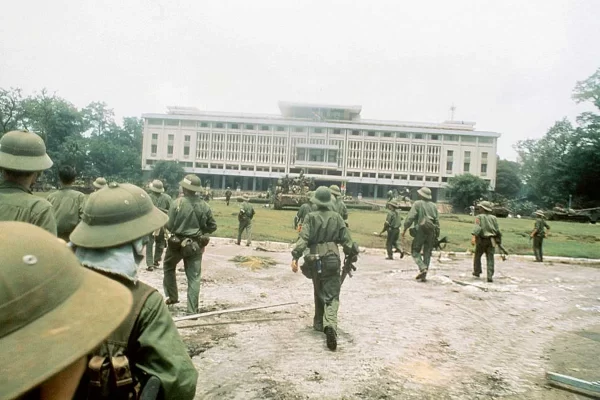
Image of liberation forces entering the Reunification Palace.
For nearly a decade, the Reunification Palace served as the command center for South Vietnam’s leadership, hosting important political meetings, receiving dignitaries, and functioning as the seat of power until the conclusion of the Vietnam War. The palace’s grand architecture and symbolic interiors reflect the aspirations and authority of South Vietnam during a turbulent period, making it a key historical site for understanding the complexities of the era.
2. Symbol of Unification
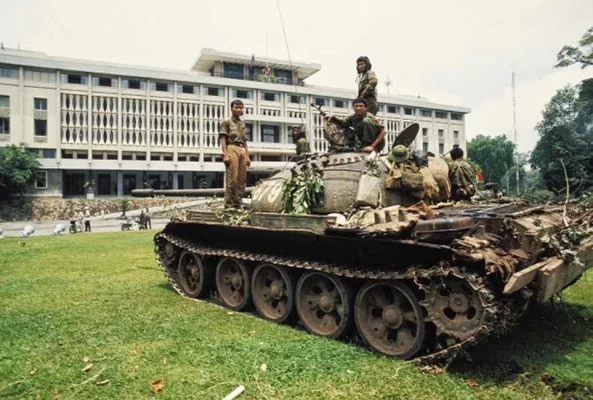
Reunification Palace is a symbol of Vietnam’s national reunification.
The Reunification Palace is perhaps most famously remembered for its pivotal role in the end of the Vietnam War. On April 30, 1975, a North Vietnamese Army tank famously crashed through the front gates of the palace, symbolizing the fall of Saigon and marking the moment of national reunification. This decisive event signified the end of years of conflict, leading to the unification of North and South Vietnam as the Socialist Republic of Vietnam.
The tank that broke through the gates that day is now preserved on the palace grounds as a symbol of peace and unity, attracting visitors who seek to better understand this monumental event in Vietnamese history. Today, the Reunification Palace stands as both a historical artifact and a living reminder of Vietnam’s journey toward peace and national harmony.
Read more: Best things to do in Ho Chi Minh City
III. Architecture and Design of the Reunification Palace
1. Modern Architectural Style
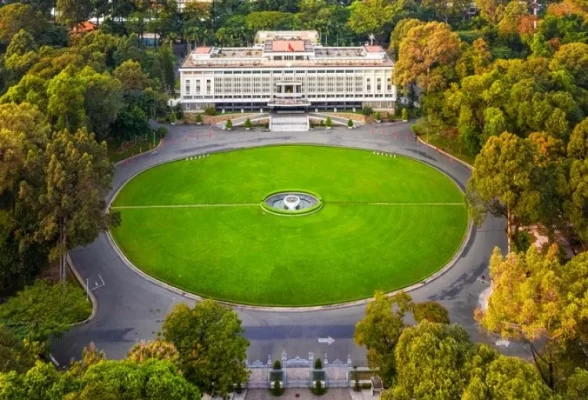
The building is designed in a modern style combined with feng shui layout.
The Reunification Palace, or Independence Palace, stands as an architectural marvel in Ho Chi Minh City, embodying a blend of modern and traditional influences. This unique structure combines clean, modern lines with cultural elements rooted in Vietnam’s heritage.
Visitors will notice that while the building features minimalist, contemporary styles, it also incorporates symbols of Eastern philosophy, such as feng shui elements, intended to promote harmony and balance. The Reunification Palace is not only a historical icon but also a symbol of innovation in Vietnamese architecture.
Learn more about: Cu Chi Tunnels Half Day Tour
2. Functionality of Each Floor
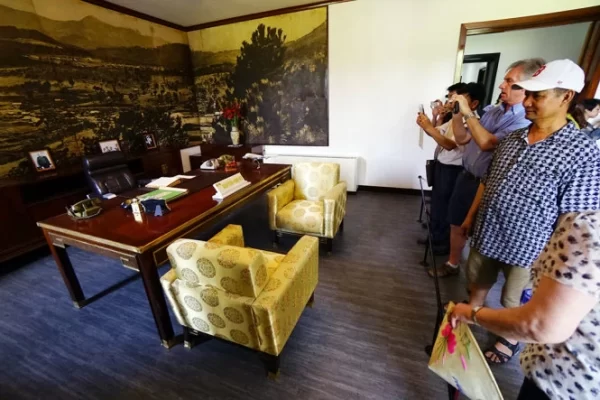
Office of the President of the Republic of Vietnam.
Each floor of the Reunification Palace was designed with distinct purposes in mind, serving as a place of both work and leisure during its time as the official residence of the President of South Vietnam.
- Basement: The underground level served as a secure bunker during the Vietnam War, complete with war rooms, telecommunication equipment, and strategic operation rooms where crucial decisions were made. It provides a vivid insight into the wartime atmosphere.
- Main Reception Halls (Ground and Second Floors): The ground and second floors house opulent reception rooms, conference rooms, and dining areas, where official meetings, receptions, and important gatherings took place. These rooms display lavish interior designs with touches of Vietnamese art and culture.
- Upper Floors: Here, visitors will find the former presidential living quarters, which include private rooms and additional reception areas.
- Rooftop and Observatory: The top floor of the Reunification Palace includes a terrace area with a heliport. It offers visitors a panoramic view of the surrounding gardens and Ho Chi Minh City’s bustling streets.
3. Design Highlights
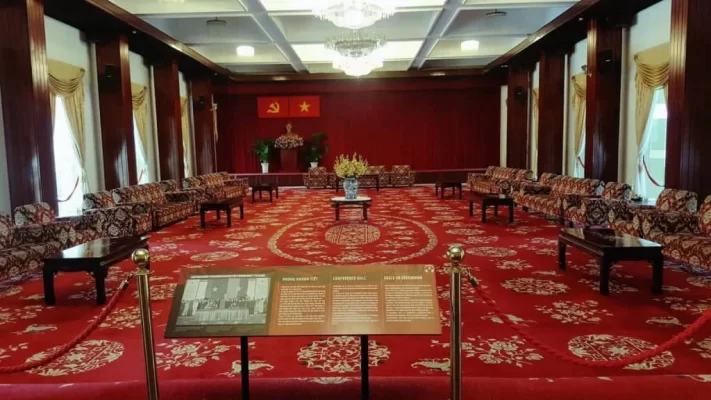
The Grand Conference Hall
The Reunification Palace’s interior boasts numerous remarkable design features that create an ambiance of prestige and power. Key highlights include:
- The Grand Conference Hall: A large and impressive space used for high-level meetings, ceremonies, and events, complete with intricate woodwork, grand lighting fixtures, and a decor scheme that speaks to Vietnam’s rich cultural heritage.
- VIP Reception Rooms: These rooms, once reserved for distinguished guests and foreign dignitaries, reflect a blend of luxurious design with culturally significant artwork and handcrafted furniture.
- Functional Rooms with Specialized Purpose: The Palace includes additional rooms tailored to various functions, from strategic planning rooms to ceremonial spaces, all reflecting the importance of the palace in Vietnam’s political history.
IV. Exploring Reunification Palace
1. Opening Hours and Ticket Prices
Reunification Palace is open to visitors daily from 8:00 AM to 4:30 PM, with a break from 11:00 AM to 1:00 PM. For international visitors, this schedule allows plenty of time to explore both the interior and exterior areas.
Tickets can be purchased on-site for approximately 40,000 VND for adults and 20,000 VND for students and children. The entry fees contribute to the maintenance of this historic landmark, helping preserve its exhibits and architecture.
2. Guided Tours in English and Other Languages
For an in-depth experience, visitors can join one of the guided tours offered in multiple languages, including English. These tours are available throughout the day, with schedules posted at the entrance.
Tour guides are highly knowledgeable about the palace’s history, providing insight into the Vietnam War era and the role of the Reunification Palace in Vietnam’s journey to independence. Group tours are organized by Palace staff, but visitors can also arrange private tours by contacting the site in advance. Each tour lasts between 60 and 90 minutes, allowing ample time to ask questions and explore each area.
3. Key Highlights to See at Reunification Palace
Reunification Palace is rich in history and design, with various exhibits and preserved artifacts that vividly depict the war period. Here are some must-see areas and displays:
- The War Room and Bunker: Explore the underground bunker, which served as a command center during the war. Visitors can see antique radios, maps, and communications equipment that played vital roles during Vietnam’s military campaigns.
- Main Reception Rooms and Presidential Office: These rooms are furnished in 1960s style, offering a glimpse into the lives of high-ranking officials at that time. The Presidential Office and the Cabinet Room are well preserved and display artifacts that show the leadership structure of the former Republic of Vietnam.
- Historical Art and Dioramas: Various rooms feature large murals and paintings depicting the cultural and social climate of the time. The artwork provides a narrative of Vietnam’s resilience, social changes, and the influence of the war on daily life.
- Courtyard Military Displays: Outside the Palace, visitors can see historical military vehicles, including the iconic tank that crashed through the Palace gates on April 30, 1975, marking the end of the Vietnam War. Additionally, an F-5 fighter jet, symbolic of the era, is displayed on the Palace grounds.
4. Historical Exhibitions at the Reunification Palace
The Reunification Palace regularly hosts historical exhibitions that immerse visitors in Vietnam’s wartime past and key moments in the country’s journey to reunification. These exhibitions often showcase a rich collection of artifacts, photographs, and documents from the Vietnam War, providing an authentic glimpse into life during this challenging era. Special exhibits may highlight significant events, such as the fall of Saigon in 1975, which marked the end of the war and the beginning of a united Vietnam.
More details: Best of Southern Vietnam
V. Practical Information and Visitor Tips
1. Location and Getting There
Reunification Palace, also known as Independence Palace, is centrally located at 135 Nam Ky Khoi Nghia Street, District 1, Ho Chi Minh City. This convenient position makes it easily accessible from most parts of the city. Here are the recommended transportation options:
- Taxi: Taxis are widely available and convenient. Popular services like Mai Linh and Vinasun are reliable options, with fares costing around 50,000 to 100,000 VND (approximately $2-4 USD) depending on the distance and traffic.
- Motorbike (Xe Om): For those seeking a faster and more adventurous way to travel, motorcycle taxis offer a budget-friendly alternative, costing roughly 20,000 VND per kilometer. Apps like Grab or Gojek make it easy to book motorcycle rides at fixed rates.
- Bus: Ho Chi Minh City’s bus system is affordable and covers many tourist areas. Routes like Bus 04 or Bus 18 pass nearby, and tickets are typically 5,000-10,000 VND. Check local bus apps for real-time updates on routes and timings.
2. Visitor Guidelines and Etiquette
To fully enjoy your visit to this iconic historical site, keep these essential guidelines in mind:
- Dress Code: Visitors are encouraged to wear respectful clothing that covers shoulders and knees, as the palace is a historical and cultural site.
- Photography Restrictions: While photography is generally permitted, certain areas may have restrictions. Look out for signs indicating where photos are not allowed, and avoid using flash in sensitive areas to preserve artifacts.
- Cleanliness: maintaining the cleanliness of the palace is important. Be mindful to dispose of waste properly and avoid bringing food and drinks into exhibit areas.
3. Tips for the Best Experience
To make the most of your visit to Reunification Palace, here are some helpful insights:
- Best Time to Visit: Mornings, ideally between 8:00 AM and 10:00 AM, are a quieter time to visit, with cooler weather and fewer crowds. Afternoons (around 3:00 PM) can also be pleasant, though it may be busier.
- Avoid Peak Times: Weekends and public holidays tend to be more crowded, as both tourists and locals visit the palace. Opt for weekdays if you prefer a more peaceful experience.
- Plan for the Weather: Ho Chi Minh City can get hot and humid, especially from May to October. Bring water, sunscreen, and a hat, especially if you plan to explore the outdoor areas.
- Guided Tours: Consider joining a guided tour to gain in-depth insights into the palace’s history. English-speaking guides are available and can enrich your understanding of the significance behind each exhibit and room.
Read more: Ho Chi Minh City Weather
VI. Nearby Attractions to Reunification Palace
1. Notre-Dame Cathedral Basilica of Saigon
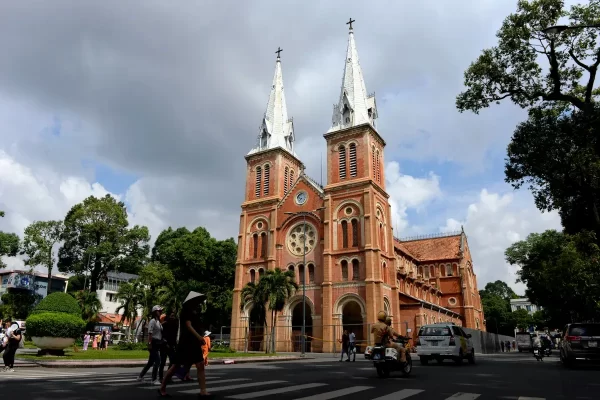
Notre-Dame Cathedral Basilica of Saigon
Just a short walk from Reunification Palace, the Notre-Dame Cathedral Basilica of Saigon is an iconic symbol of French colonial architecture in Ho Chi Minh City. Built between 1863 and 1880, the cathedral is notable for its two towering bell towers, red brick façade, and stunning stained-glass windows.
As one of the most photographed landmarks in the city, it’s a must-visit for history and architecture enthusiasts. Visitors should note that while the exterior is often accessible, the interior may have limited access due to ongoing renovations.
Do not miss: Best Things to Do in Ho Chi Minh City
2. Saigon Central Post Office
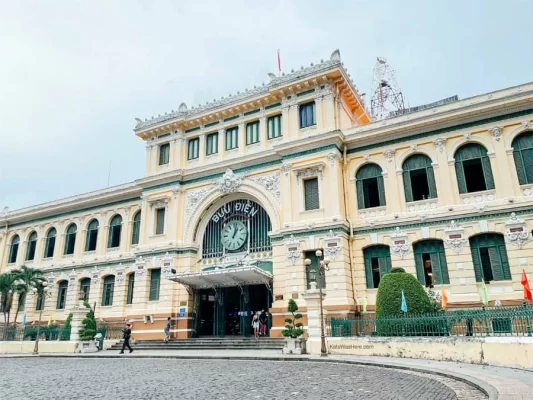
Saigon Central Post Office
Located right next to Notre-Dame Cathedral, the Saigon Central Post Office is another architectural gem designed by Gustave Eiffel, the same mind behind the Eiffel Tower. Its stunning, neoclassical structure is adorned with vaulted ceilings, intricate details, and a large portrait of Ho Chi Minh, making it both a functional post office and a historical site. Inside, visitors can send postcards, purchase souvenirs, or simply admire the beautiful architecture. It’s a quick stop that provides insight into Saigon’s colonial history.
You might be like: Discover The Ho Chi Minh City to Mekong Delta Tour
3. Nguyen Hue Walking Street
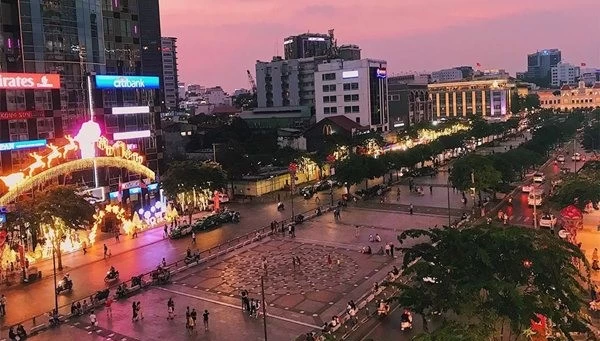
Nguyen Hue Walking Street
A little further away but still within a short distance, Nguyen Hue Walking Street is a bustling pedestrian avenue, especially vibrant in the evening. Known for its lively atmosphere, street performances, and proximity to cafes and restaurants, Nguyen Hue is an ideal spot to relax and people-watch after exploring the historical landmarks. You’ll also find the City Hall building at the end of the street, an impressive structure that lights up beautifully at night, providing a perfect backdrop for photos.
4. War Remnants Museum
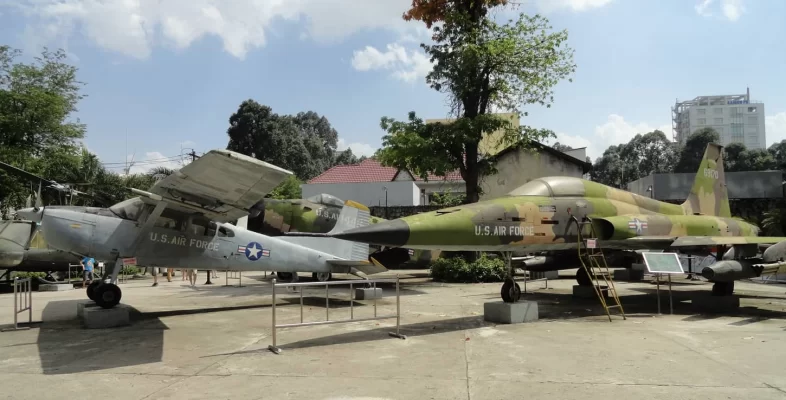
War Remnants Museum
Just a short walk from Reunification Palace, the War Remnants Museum offers a deeper look into the history of the Vietnam War. This museum provides international tourists with an eye-opening experience, displaying detailed exhibits on wartime impacts, weaponry, and photo collections that capture personal stories and struggles.
Visitors can explore different sections, including areas dedicated to the chemical warfare consequences and international anti-war movements, allowing for a well-rounded historical understanding that complements a visit to the Palace.
In conclusion, the Reunification Palace stands as a poignant symbol of Vietnam’s history and resilience. Its architectural beauty, rich historical significance, and the narratives encapsulated within its walls provide a profound glimpse into the country’s turbulent past. Visiting the palace is not merely an exploration of a historical site; it is an opportunity to connect with the pivotal moments that shaped Vietnam’s journey towards reunification.
As you walk through its grand halls and lush gardens, you are reminded of the enduring spirit of a nation that has overcome immense challenges. A trip to the Reunification Palace is a must for any international traveler, offering an enlightening experience that deepens understanding and appreciation for Vietnam’s rich cultural heritage.
See more: Ho Chi Minh City travel tips



